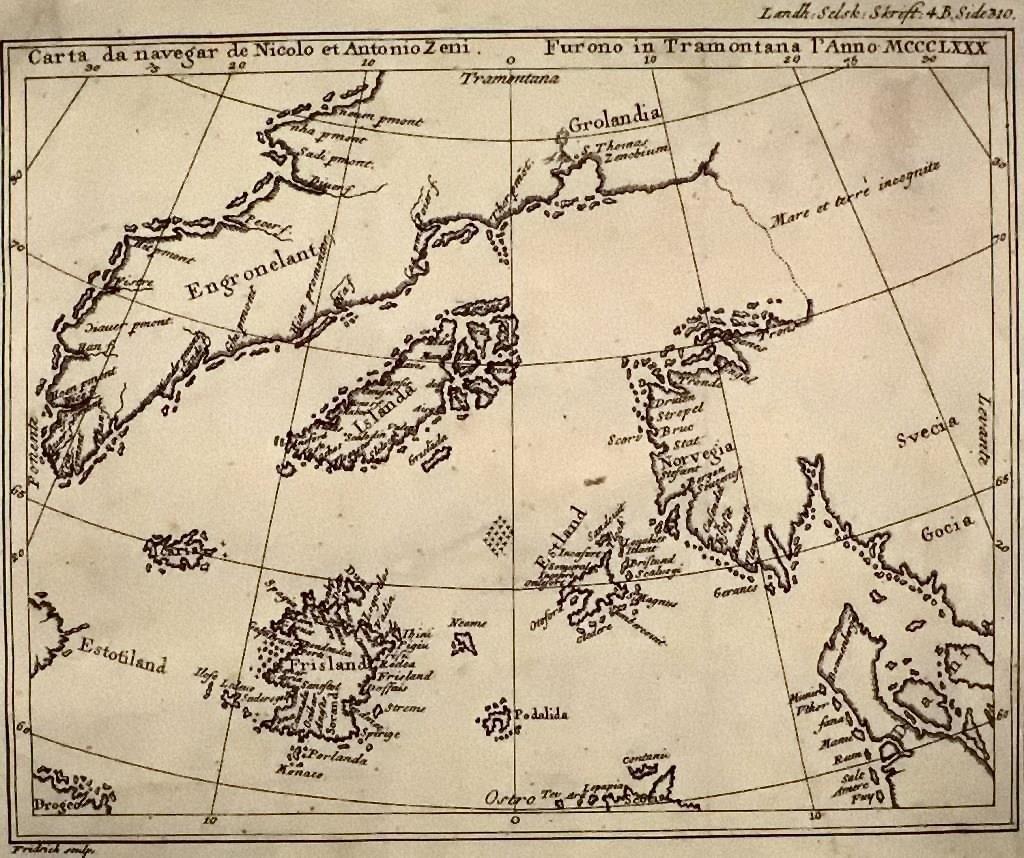Presentation of the Duišan and Kven language
Autore: Sebastien Thomine
Data della SM: 09-08-2021
Data FL: 03-01-2022
Numero FL: Florida-00007E-00
Citazione: Thomine, Sebastiano. 2021. “Presentation of the
Duišan and Kven language” Florida-00007E-00,
Fiat Lingua,
March 2022.
Diritto d'autore: © 2021 Sebastien Thomine. Questo lavoro è
concesso in licenza con un'attribuzione Creative Commons-
Non commerciale, senza derivati 3.0 Licenza non trasportata.
http://creativecommons.org/licenses/by-nc-nd/3.0/
Fiat Lingua è prodotto e gestito dalla Language Creation Society (LCS). Per maggiori informazioni
riguardo alla LCS, visita http://www.conlang.org/
Autore: Sébastien Thomine
Presentation of the Duišan and Kven language
Table of contents
Introduction …………………………………………………………… p.1
1. The sound systems of Duišan and Kven …………………………… p.3
1.1 The vowel system
1.2 The consonant system
1.3 Basic phonotactics of Duišan and Kven
2. The basic nominal system of Duišan and Kven ………………… p.5
2.1 Personal pronouns
2.2 Possessive pronouns
2.3 Word types
2.4 Preposition system
2.5 Adjectives
3. The basic verbal systems of Duišan and Kven ………………….. p.9
3.1 Verb types
3.2 Alignment
3.3 Mood and tenses
3.4 Aspects
3.5 Interrogative words
3.6 Adverbs of manner
3.7 Negation
3.8 Evidentiality and derivation patterns
4. A short text in Duišan …………………………………………….. p.14
Riferimenti
Appendix (numeral system and glossary)
This paper is adapted from the final exam paper of the course HIF-1022 Constructed language
given at the Arctic University of Tromsø in Norway during the spring semester of 2021. In questo
paper I present the constructed language Duišan and compare it with the Kven language, UN
minority language from the Uralic language family spoken in Northern Norway.
Duišan is a language spoken by the inhabitants of the imaginary island of Frisland, which was
located between Iceland and Greenland. Even though Frisland is an imaginary island, Esso
appeared in most of the maritime map from the 1560s through the 1660s. The belief in Frisland
was so strong that a few maps of the island mentioning the names of its regions and major cities
were even drawn and published in the most renowned maps of the 17th century. It was so
systematic that it became a way for the historians to quickly identify the maritime maps of that
period. In the lore of my constructed language however, Frisland is the name only used by the
outsiders. The natives of the island use the word Duišia. Even though none of the island natives
ever came back to Duišia after they left, the people of Duišia, the Duišan, have knowledge of
the outside world thanks to the people they rescue from shipwrecks. It drove the Duišan to
question the nature of their reality and constantly wonder if they are real or not. Conseguentemente,
their society is peacefully divided between the people who think they are real and the people
who think they are imaginary.
Kven, the language I compare Duišan with, is a Finnic language derived from the Finnish
dialects spoken from the 16th to the early 20th century in the northernmost parts of Sweden and
Finland. From the 16th century onwards, peoples from those northern areas started to gradually
settle in Northern Norway, with a peak during the middle of the 19th century (Niemi, 1995). COME
the decades went, the language of the newcomers started to be influenced by the Norwegian
language and the Northern Sámi language. Like the indigenous Sámi people of Norway, IL
Kven were the victims of strong assimilation policies from the middle of the 19th century
through the 1970s. In the early 21th century, the Kven is spoken by less than 2000 individuals
and became officially a language of its own in 2005 (Niemi, 2017).
In this paper, I will compare some of the main features of the Duišan and Kven languages. IO
start by presenting the sound systems of Duišan and Kven, then their basic nominal system and
finally the basic verbal systems of both languages. The rules and grammar of Kven come from
the book Kvensk grammatikk by Eira Söderholm whereas the concepts and notions used in the
creation of Duišan come from The Art of Language Invention by David Peterson and the
materials presented in the course HIF-1022 Constructed language.
1
The Island of Frisland in the Zeno map (1558)
Source: https://no.wikipedia.org/wiki/Frisland
2
1. The sound systems of Duišan and Kven:
The sound system of both languages is presented through the International Phonetic Alphabet
IPA.
1.1 The vowel system
Duišan Kven
Nasal
Front
Back
Front Back
Unrounded Rounded Unrounded Rounded
Close-mid
Open
ɛ̃
ɔ̃
ɑ̃
Vicino
i iː
Mid
e eː
y yː
ø øː
u uː
o oː
Open æ æː
ɑ ɑː
The vowels alphabet of Duišan for the vowels are a, e, io, o, tu, si, ê, ø. The nasal sounds are -in,
-an, -on. An accent is put on the vowels i, a and o before the consonant –n when the sound is
not nasalized. The Kven has short and long vowels that affect the meaning of the words and is
identical to the Finnish language. The vowels alphabet is a, e, io, o, tu, si, ä, ö, å
3
1.2 The consonant system
The Duišan
Bilabial Labiodental Dental Alveolar Postalveolar Palatal Velar
m
P
b
Nasal
Plosive
Affricates
Fricative
voiceless
voiced
Voiceless
voices
voiceless
voiced
Approximant
f
v
N
t
d
t͡ s
d͡ z
s
z.z
l
ŋ
k
g
ʁ
t͡ ʃ
d͡ ʒ
ʃ
j
The Kven
Bilabial Labiodental Dental Alveolar Postalveolar Palatal Velar Glottal
Nasal
m
Plosive
voiceless
P
voiced
(b)
voiceless
f
Fricative
voiced
Trill
Approximant
ʋ
N
t
(d)
s
r
l
ð
ŋ
k
(ɡ)
(ʃ)
h
j
The sound /b, d, ɡ, ʃ/ are only found in loanwords and /ð/ is highlighted in red because it is a
sound that does not exist in Finnish and is unique to Kven.
4
1.3 Basic phonotactics of Duišan and Kven
Duišan
Any of the vowels can be found in the word-finals and word initials positions. There is no
double vowels of the same type and nearly all the vowels can combined to create diphthongs
thanks to the different influences Duišan received from the people rescued from shipwrecks.
A cluster of three consonants can be found anywhere in a word but not in word-finals, dove
one consonant is usually the norm. The consonants /p, b, d, g, ŋ, s, z/ are never word-finals
unless the word is a loan word.
There is a vowel harmony in Duišan. When the ending of a word changes due to a plural form,
the vowel of the plural in that case will always be the same as the one preceding it.
Ex: casa: pysín – houses: pysimit / time: veras – times: veraksat
Kven
Kven is similar to the Finnish language when it comes to phonotactics. Any of the vowels can
be found in the word-final and word-initial positions. Almost all the vowels can be doubled
and combined with 18 diphthongs possible. When it comes to the consonant, only /t, s, N, r, l/
can be word-finals whereas all the consonants except /d/ and /ŋ/ can be word-initial. Ci sono
no consonant clusters on a word-final except for loan words.
The Kven has a strict vocal harmony with two main groups of vowels that do not mix in the
same word. The groups are ä, ö, y and a, o, tu. The vowels e and i are used with both groups.
5
2. The basic nominal system of Duišan and Kven
2.1 Personal pronouns
In Duišan, when a verb starts with a vowel, the last vowel of the pronoun disappears and take
an apostrophe, ex: mo – m’. Modua in Duišan is based on the French pronoun on.
2.2 Possessive pronouns
The possessive pronouns of both Kven and Duišan are placed before the substantive
possessed.
Ex: Duišan: Dalo pysín: my house / Kven: Minun huonet: my house
6
2.3 Word types
There is no cases in Duišan but words decline when they take the plural or are compounded
with other words. In Kven, there is over 13 different cases. Both Duišan and Kven have a base
form for nouns, adjectives and sometimes adverbs. Here are the main word endings and how
they decline when they take a case.
Duišan
Kven
The plural in both Kven and Duišan is marked by –t at the end of the words.
Ex: Duišan: house – pysín – pysimit / time – veras – veraksat
Kven: idea – ajatus – ajatukset / truth – totuus – tottudet
7
Noun typeStemHousePysínpysimi-CityRaušotánRaušotama-LeftSoidonSoidomo-Aloneiata (one vocal ending)iata-TimeVerasVerks-Godtottode-Personiatešiateče-Bolarpontponne-Rocknaifnaive-WeatherOsea (two vocals ending)Oset-Egg/yellowénkalénkal-Noun typeStemMorningaamuaamu-countrymaamaa-coffeekaffikaffi-wintertalvitalve-languagekielikiele-watervesiveđe-Boatvenetvenhee-Guest/unknownvierasvierhaa-Ideaajatusajatuks-Personihminenihmise-memberjäsenjäsene-keysavvainavvaime-loverakkhausrakkhauđe-unluckyonnetononnetoma-truthtottuustottuđe- / tottuksi-
2.4 Preposition systems
Kven has very few prepositions and uses a system of 13 cases: nominative, genitive, essive,
partitive, translative, inessive, illative, adessive, elative, ablative, allative, comitative and
abessive. Duišan on the other hand uses many prepositions that combine to create words of their
own. Here are some examples:
2.5 Adjectives
In Kven, all adjectives go before the noun they qualify, taking their cases and numbers. IL
relational adjectives are also before the nouns.
In Duišan, the qualitative adjectives are congruent in number with the noun they qualify (except
in some cases for the adjectives ending in –e). The qualificative adjectives expressing an
opinion-impression and indicating a color are placed after the nouns. Tuttavia, the adjectives
referring to the weather and physical features are placed before the nouns. While qualificative
adjectives are not created following any particular set of rules, the relational adjectives are
formed from a substantive with the suffix –nín added and goes after the substantive. Molti
adjectives in Duišan can also be used as substantives.
Ex: Il mondo: dal’iktevašín – The world day: dal’iktevašiminín turpa
8
At/to – one : At the / to the – onedal (sg), onedame (pl) / at a – ony (sg), onyme (pl) For – veron: For the – Verondal (sg), Verondame (pl) / For a – Verony (sg), Veronyme (pl) In – Sasan: in the – sasandal (sg), sasandame (pl) / in a – Sasany (sg), Sasanyme (pl) On – čan: on the – čadal (sg), čadame (pl) / on a – čany (sg), čanyme (pl) In front of – aitron: … the – aitrodal (sg), aitrodame (pl) / … a – aitrony (sg), aitronyme (pl)
3. The basic verbal systems of Duišan and Kven
3.1 Verb types
Duišan has three verb groups and a fourth group with two different endings. The first group
ends with – ute (ex: rániute – to take). the second group – ite (ex: Kačite – to say) and the third
group –ate (ex: avate – to see. The fourth group ends in –otre (ex: potre – to do) and –uatre
(namuatre – to know). There are two auxiliary verbs in Duišan, to be Enotre and to have Obate.
In Kven, the verbs can be regrouped in five main categories (with many subcategories) in which
the number of syllables and the endings decide of the type. This paper does not present the verb
types of Kven due to their important number and complexity.
3.2 Alignment
In term of alignment, Duišan is a nominative/accusative system marked by a strict word order
Subject-Verb-Object. Kven is also a nominative/accusative verbal system but with a more
flexible word order. The object can be for example placed before the verb depending on the
case it takes.
3.3 Mood and tenses
Duišan has three moods: indicative, imperative and conditional. Kven has the same moods but
some traces of a potential mood that derives from Finnish can be found in some words. In the
indicative mood Duišan has six tenses: presente, imperfect, perfect, past perfect, future and
future perfect. Kven has four tenses in the indicative: presente, imperfect, perfect and past
perfect, while the future is decided by the context. I will only detail the indicative tenses in
Duišan in this section.
The present tense in Duišan takes an –n at the singular and -ne at the plural, except for the third
person modua.
An -i- marks the imperfect:
9
The perfect tense is formed with to have + past participle, except for the verb of movement that
takes to be, like in French or Italian. Enotre is to be and is one of the few irregular verbs in
Duišan.
For the imperative tense in Duišan, the singular of the second person is the same as in the
indicative present form. The plural of the first person is the indicative plural of to go – žitune
followed by the infinitive. Ex: Let’s speak! = Žitune smavate! /Go[in plural] you speak/. IL
plural of the second person is the same as the indicative present form.
The future tense is formed by adding –r after the vowel without the infinitive and adding the
same vowel followed by –n or –ne.
10
Mo žituín– I went More žituine– we went Dø žituín – you went Dore žituine – you went Tuot žituín – he/she went Totre žituine – they went Diot žituín – it/this/that went Modua žituri – French “on” went
3.4 Aspects
Duišan and Kven have a continuous and progressive aspect. In Duišan, the continuous tense is
built on the structure enotre pari (to be + pari ) + infinitive.
Ex: Mo šén pari rániute = I am taking.
The present participle is built with only Pari + infinitive.
Ex: Pari rániute – While/when taking.
A derivative of pari is para as a suffix in the form substantive/adjective + para, a suffix
referring to the entrance into a certain state and function as an archaic translative case (IL
vowel before para is the same vowel that the last vowel of the base form).
Ex: to go to war – žitute vitunaksapara (to go war-entering);(Vitunas: guerra)
to go down in history – žitute banakiksipara (banakis is the nominative form).
In Kven, the continuous aspect marked by to be is followed with the verb at the third infinitive
Ex: Mie oon syömässä – I am eating. What is called the second infinitive in Kven is used to
marked something that is done at the same time Ex: Tullessani kotiin satoi – When I came
casa, it rained.
The Kven has a translative case of its own adding up -ksi to the stem of the word
Ex: Mie puhun franskaksi – I am speaking in French (Proprio adesso)
Mie tulen kippeeksi – I am getting sick (Litteraly I come sick)
3.5 Interrogative words
The interrogative words in Duišan are invariable, while in Kven some of them change
depending on the cases or the number. The structure Verb + subject at the beginning of a
question is used in both Duišan and Kven, but Kven adds the suffix particle – ko/kö after the
verb. Here are some examples in Duišan:
Who – Pam, Che cosa – kaima, Che cosa (exclamative and accusative) – kait, Where – tau
When – poimi, Why – veronkait, How – Kaimaka
11
3.6 Adverbs of manner
In Duišan, the mark of the adverbs is –aksa or – ksa added to the adjective.
Ex: Slow – Pios – Slowly – Pioksaksa / Fast – Striván – quickly – Strivamaksa
In Kven, the mark of an adverb is – sti added to the adjective
Ex: Nice – Siivo – Siivosti / Slow – Hiđas – Hithaasti
3.7 Negation
In Duišan, the negation is marked by two elements when the personal pronouns are used. In
that case, the personal pronoun transforms, and a second negative elements can be added after
the verb, to mark an emphasis (but can be omitted otherwise). In Kven, the negation is marked
by a particle in front of the verb at the negative form, and the negative particle changes for each
persona.
Amo: IO – not Amore: Noi – non
Ado: Voi – not Adore: Voi – non
Atuo: he/she – not Adotre: they – non
Adit: it -not
Amodua: ‘everybody/nobody’ – non
The second element of negation is ‘kán’ and follows the verb when the personal pronouns are
not used. If used alone it emphazes
Ex: I don’t speak Duišan: Amo smavan Duišan
Henry don’t speak: Henry smavan kán Duišan
12
3.8 Evidentiality and derivation patterns
Duišan is a verb-framed language and the evidentiality is marked by a verb in context without
the infinitive and the added suffix particles – arpi / -narpi. Derivational patterns can sometimes
occur with different suffixes, but they come from archaic language forms.
Ex: namuatre – to know / Namuanarpi: as far as [uno] knows
Kven on the other hand is a satellite-frames language. Evidentiality on the first person is built
on the infinitive verb with the what used to be the Finnish possessive suffix -ni.
Ex: Tietääkseni ‘to my knowledge, as far as I know’
13
3. Leipzig Glossing Rules: A short text in Duišan
This last section contains a small text in Duišan that is analyzed by using the Leipzig glossing
regole.
We are the Duišan, the people who might not exist. We live on an Island that people never came
back from but that you heard from the sailors and cartographers. We fish, we farm, and we
herd sheep and goats.
More žéne dame duišamat, dal’iatia pám akaines kán invuatre. More napurine čan ny
duišanosti kymet dam’iatinakat pečarine niet mavín čan dore kaivaine atadame
stradavemêkset nav katkarasvemêkset. More vladamine, more akorasune dal rata nav more
akorasune dame bailet nav kornarit.
More žéne dame duiša-mat
We be-PRS-PL the-PL Duišan-PL
‘We are the Duišan’
dal’ iatia pám akaines kán invuatre.
the people who can-COND not-NEG exist
‘the people who might not exist’
More napurine čan ny duišanosti
We live-PRS-SG on an Island
‘We live on an Island’
Kymet dam’iatinakat pečarine niet mavín
that-REL-PL people come.back.from-PST-PL never but
‘that people never came back from but’
čan dore kaivaine atadame stradavemêkse-t nav katkarasvemêkse-t
That you hear-PST-SG from.the;ART;PL sailor-PL and cartographer+PL
‘that you heard from the sailors and cartographers’
More vladamine, more akorasune dal rata nav
We fish-PRS-PRL we take.care.of-PRS-PRL the earth and
‘We fish, we farm and’
more akorasune dame baile-t nav kornari-t
we take.care.of-PRS-PRL the-PRL sheep-PRL and goat-PRL.
‘we herd sheep and goats’.
14
Riferimenti
Niemi, Einar (1995). History of minorities: the Sami and the Kvens. In William H. Hubbard et
al. (eds.) Making a historical culture. Historiography in Norway pp. 325-346. Scandinavian
University Press, Oslo.
Niemi, E. (2017). Fornorskingspolitikken overfor samene og kvenene. [Norwegianization
politics towards the Sami and Kven]. Nel N. Brandal, C. UN. Døving, & IO. Thorson. Plesner
(Eds.), Nasjonale minoriteter og urfolk i norsk politikk fra 1900 til 2016 [National minorities
and indigenous peoples in Norwegian politics from 1900 to 2016] pp. 131–150. Oslo,
Norway: Cappelen Damm Akademisk.
Peterson, David J (2015). The Art of Language Invention: From Horse-Lords to Dark Elves,
the Words Behind World-Building. Penguin Publishing Group, New York
Söderholm, Eira (2017). Kvensk Grammatikk. Cappelen Damm Akademisk.
https://doi.org/10.23865/noasp.24
15
Appendix
UN. Numeral system
Numerals 1-10
1: Ny 6: Pimán
2: Dy 7: Atki
3: čako 8: Nitki
4: Katko 9: Arimki
5: žalko (also hand) 10: Nyse
Numerals 10-20
11: Nyvaika 16: Pimánvaika
12: Dyvaika 17: Atgivaika
13: čagovaika 18: Nitgivaika
14: Katgovaika 19: Arimgivaika
15: žalgovaika 20: Dynyse
Numerals 21-100
21: Dynyseny 60: Pimányse
27: Dynysatki 70: Atkinyse
29: Dynysarimki 80: Nitkimyse
30: čakonyse 90: Arimkinyse
B. Colors
Grey – énšiš
Yellow – énkal (also egg)
Black – Proton
White – šiš
Red – Arán
Brown – sule
Blue – Darile
Green – Marsis
Violetti – Korgra
Orange – laranra
16
C. Glossary
Dark orange – laranra proti
Light orange – laranra šiš
Akate: to can
Akorasute: to take care of
A: Di
Atadame: del (pl.)
Avate – to see
Baile: sheep
Čan: su
Dal: IL
Dame: IL (pl.)
Daši: inverno
Dore: Voi (pl.)
Duiša: Frisland
Duišan: the Duišan people and the Duišan anguage
Duišanosti: Island
Énkal: uovo ; yellow
Enotre: to be
Iatinakat
Iata:solo
Iateš: persona
Iatia: persone
Irún: Prima
Ikte: all
Iktevašín: mondo
Ikturpa: Sempre
Invuatre: to exit
Kačite – to say
Kaivatre: sentire
Kán: non
Kar: that/which (relative)
17
Karikar: a few
Katkaras: something small and square
Katkarasvemês: cartographer
kornari: Goat
Kyne: of which (sg.)
Kymet: of which (pl.)
Mavín: Ma
More: Noi
Naif: rock
Napurite: to live
Nav: e
Niet: Mai
Ny: UN
Nyme: UN (plural)
Obate: avere
Osea: weather
Pančo: these/those
Pios: lento
Pont: bolar
potre – to do
proti – buio
Pysín: casa
Pám: Che cosa
pečarite: to come back
Očan: over/above
Rániute – to take
Rata: terra
Rauči: market
Raušotán: città
Soidon: Sinistra
Strada: sea
Stradavemês: sailor
18
Striván: fast
Strym: Ora
Šiš: (adj.)bianco ; leggero
Tot: god
Turpa: giorno
Vačo: this/that
Veras: Ore
Veroimi: Perché
Vlanamite: to rain
19






